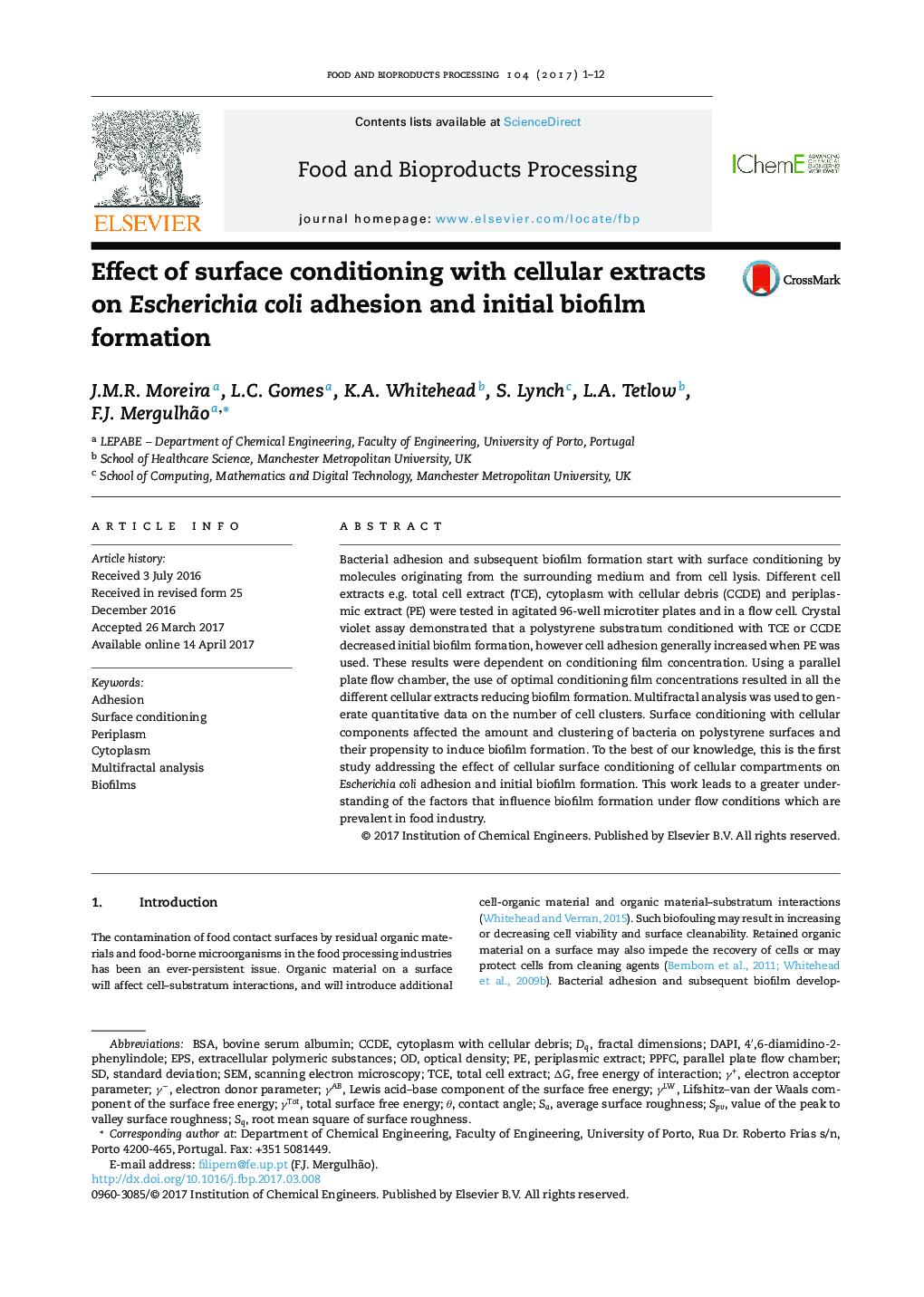| Article ID | Journal | Published Year | Pages | File Type |
|---|---|---|---|---|
| 4752927 | Food and Bioproducts Processing | 2017 | 12 Pages |
â¢Microplate assays demonstrated that TCE and CCDE decreased initial biofilm formation.â¢Cell adhesion generally increased when PE was used.â¢Biofilm formation was dependent on the conditioning film concentration.â¢Under flow conditions all conditioning films reduced biofilm formation.â¢Surface conditioning affected the amount and clustering of bacteria on surfaces.
Bacterial adhesion and subsequent biofilm formation start with surface conditioning by molecules originating from the surrounding medium and from cell lysis. Different cell extracts e.g. total cell extract (TCE), cytoplasm with cellular debris (CCDE) and periplasmic extract (PE) were tested in agitated 96-well microtiter plates and in a flow cell. Crystal violet assay demonstrated that a polystyrene substratum conditioned with TCE or CCDE decreased initial biofilm formation, however cell adhesion generally increased when PE was used. These results were dependent on conditioning film concentration. Using a parallel plate flow chamber, the use of optimal conditioning film concentrations resulted in all the different cellular extracts reducing biofilm formation. Multifractal analysis was used to generate quantitative data on the number of cell clusters. Surface conditioning with cellular components affected the amount and clustering of bacteria on polystyrene surfaces and their propensity to induce biofilm formation. To the best of our knowledge, this is the first study addressing the effect of cellular surface conditioning of cellular compartments on Escherichia coli adhesion and initial biofilm formation. This work leads to a greater understanding of the factors that influence biofilm formation under flow conditions which are prevalent in food industry.
Graphical abstractDownload high-res image (114KB)Download full-size image
